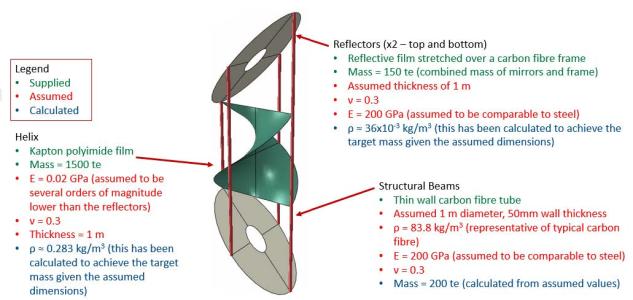The interaction of structural dynamics with the orbital mechanics of Solar Power Satellites

Space Based Solar Power concepts promise the generation of large amounts of renewable power by launching vast Solar Power Satellites (SPS) into space and beaming the power back to rectennas on Earth. Due to diffraction physics, large scale arrays delivering 2GW of power to the ground will be of the order of a kilometre in length and have masses of between 2,000 and 10,000 tonnes. There is significant and recently renewed interest in pursuing Space Based Solar Power (SBSP) technology, due to the need to decarbonise the energy supply to achieve Net Zero goals and a recent focus on achieving energy security. SBSP offers a number of potential advantages over the majority of terrestrial renewables, including high-capacity, dispatchable power that can be delivered across a large area. Given the size of SPS there is a potential for their structural dynamics to couple with their orbit mechanics, leading to the need for orbit correction. In addition to the scale of such structures there is also considerable challenge to be met in maintaining their shape and integrity when in orbit due to the tendency of any large orbiting structure to undergo various statically and dynamically induced deformations. This study, therefore seeks to investigate the magnitude of the coupling between the orbital mechanics and the structural dynamics of Solar Power Satellites and the insight gained will lead to the development of design guidance for optimising SPS structures. This study has been conducted by Frazer-Nash Consultancy Limited working collaboratively with the University of Strathclyde. The study has been conducted on behalf of the European Space Agency (ESA) through the Open Space Innovation Platform (OSIP).
